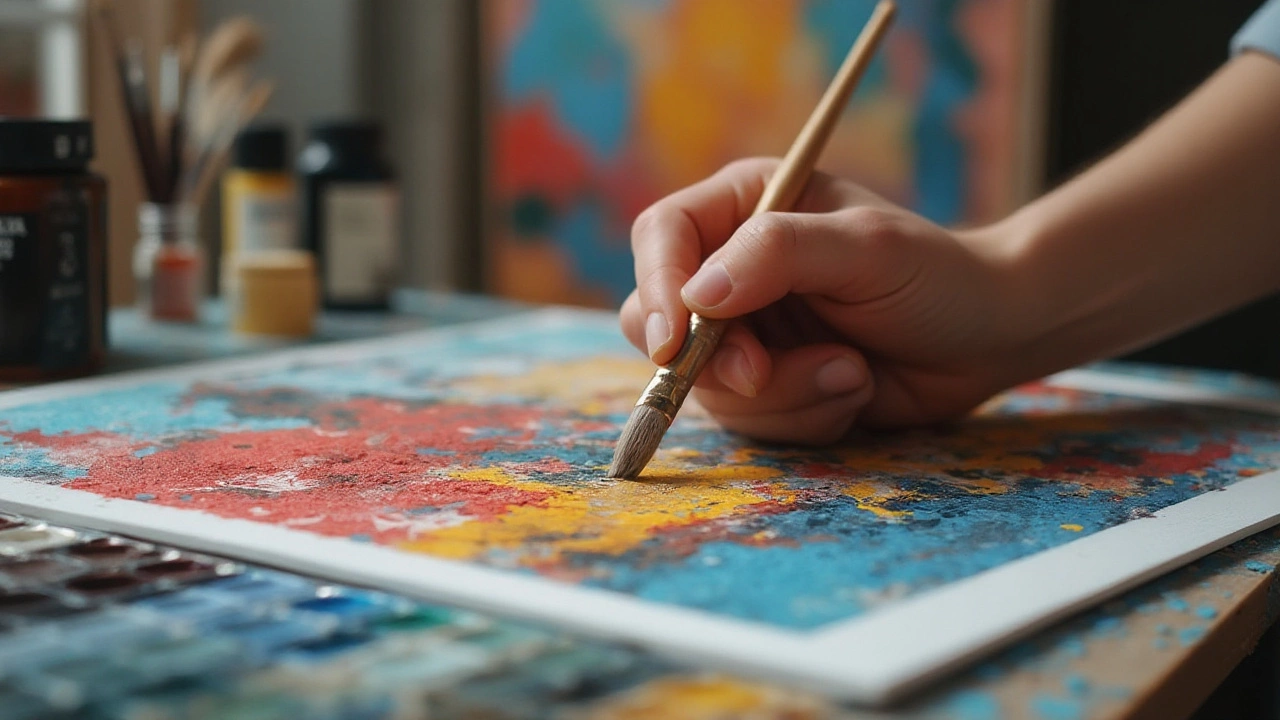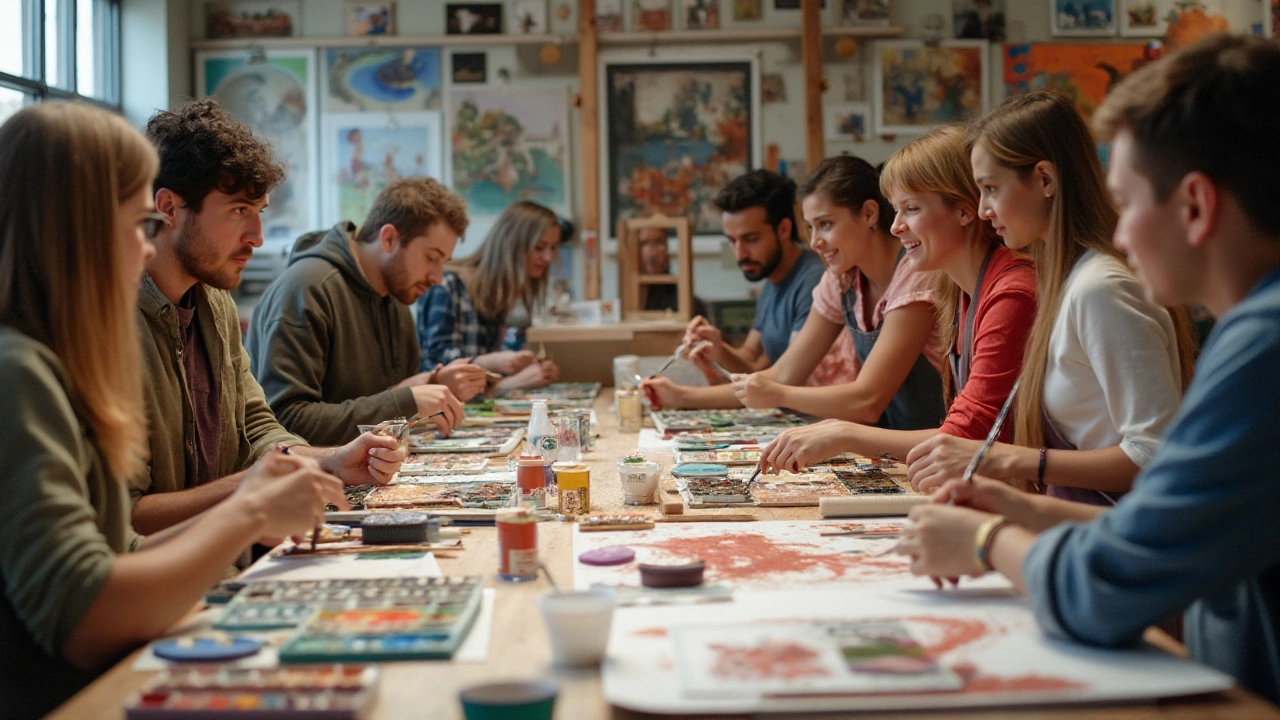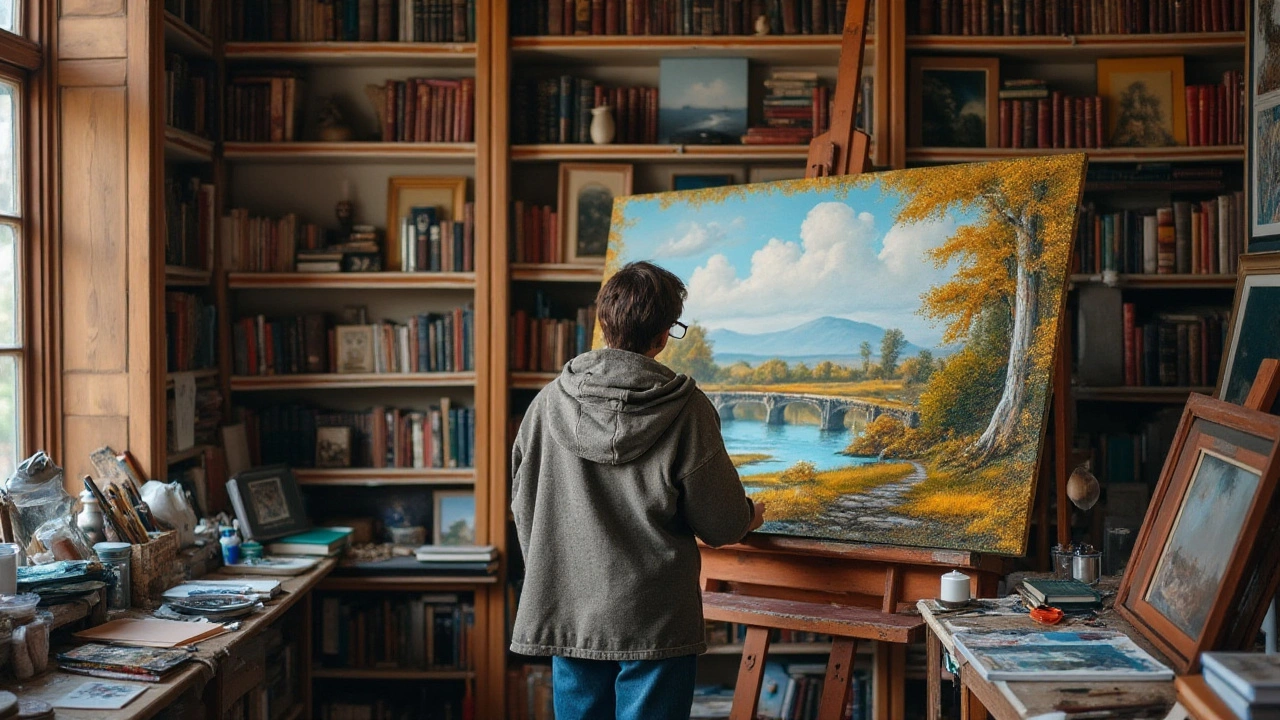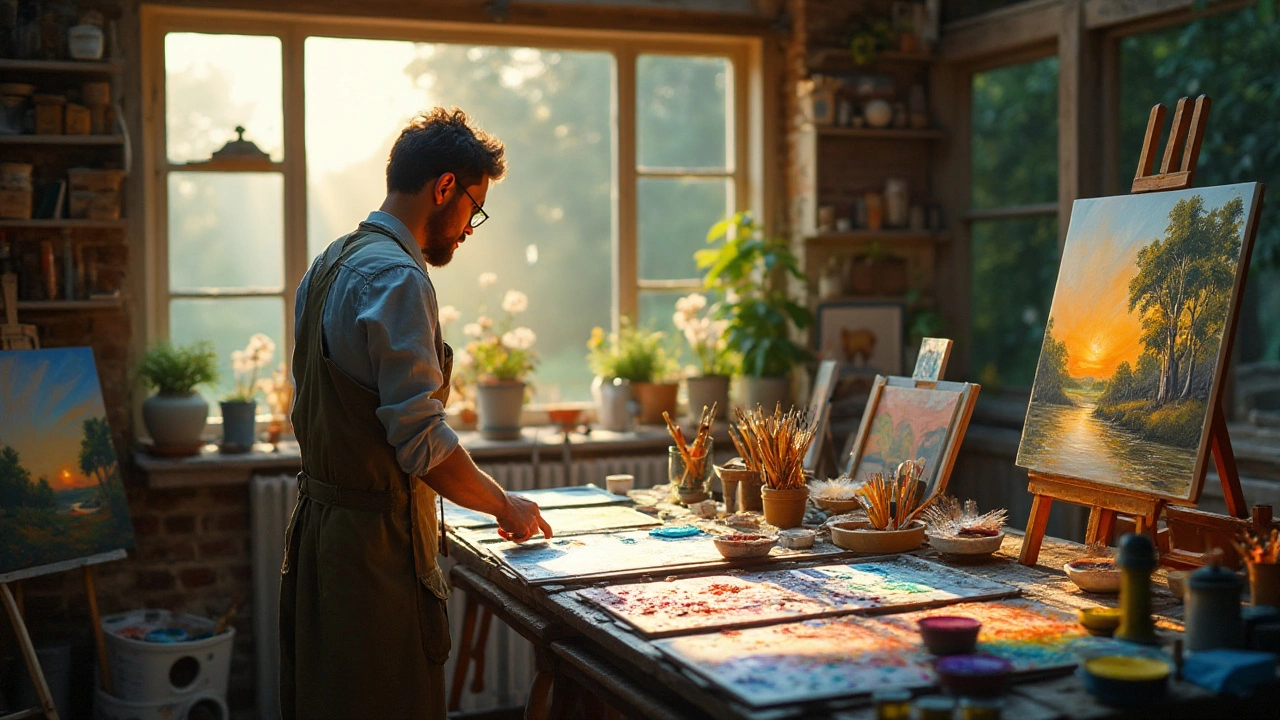Embarking on the journey of oil painting is like entering a realm where time slows down, allowing each brush stroke to narrate a story. Whether you are a seasoned artist or a curious beginner, understanding how to activate oil paint can elevate the essence of your work. This process not only influences the manner in which the paint adheres to the canvas but also how it captures light and expresses color.
Traditionally, oil paints are activated with the delicate addition of specific mediums. These mediums can alter the paint's thickness, texture, and drying time, offering endless creative possibilities. In today's art world, modern innovations provide even more options for experimentation, inviting artists to weave their unique narratives through each painting.
This guide aims to unfold the secrets behind oil paint activation, blending time-honored practices with contemporary approaches. Explore these techniques to craft art that resonates deeply with viewers and showcases the profound beauty and depth only oil paintings can offer.
- Traditional Methods of Activating Oil Paint
- Modern Mediums and Tools
- Techniques for Better Texture and Fluidity
- Tips for Experimenting and Finding Your Style
Traditional Methods of Activating Oil Paint
Stepping into the world of traditional oil painting is an odyssey through time, revealing secrets passed down through generations. The journey begins with understanding what truly activates oil paint, and often, the simplest of techniques lead to the most profound results. When painters of old dipped their brushes into pigments, they knew that adding a medium was key. Linseed oil, the most beloved and historical choice, has long been the gateway to making pigments pliable and luminous. This natural oil, extracted from flax seeds, not only thins the paint but also enhances its drying properties, imbuing each layer with a subtle sheen that has a life of its own.
The magical transformation doesn’t stop there. Other oils like walnut and poppy seed offer unique attributes that artists treasure. Walnut oil, with its slower drying time, allows for softer blending and layering, a technique beloved by those who wish to capture ethereal light effects. Meanwhile, poppy seed oil is famed for its minimal yellowing over time, making it a favorite for paler hues. As each type of oil influences the texture and longevity of the paint, understanding their properties allows artists to manipulate and mold their masterpieces with deliberate intention. Painting techniques are born anew with these oils, as each adds its distinctive touch.
Insights From Historical Artists
Throughout history, many renowned artists have shared their insights on these traditional methods. For instance,
the illustrious Dutch painter Rembrandt reportedly claimed, "Oil paint is alive—treated kindly, it serves faithfully."His preference for thinned layers, often called glazes, showcases the luminous depth that oils can achieve, almost as if capturing light itself within the canvas.
- Linseed Oil: Adds gloss and improves flow, though cautious use is advised due to its tendency to yellow over time.
- Walnut Oil: Ideal for its slower drying time, offering delicate and smooth applications.
- Poppy Seed Oil: Excellent for bright colors, maintaining vibrancy without yellowing.
The charm of the traditional approach lies in its balance of patience and precision. Artists often engage in a ritualistic process, carefully selecting and mixing these oils with their paints. The dance of the brush across the canvas becomes almost meditative, grounding the artist in the experience of creation. As this technique has endured through the ages, its legacy is seen in masterpieces hanging in galleries worldwide, each a testament to the art of activating oil paint through time-honored methods.

Modern Mediums and Tools
The world of oil painting mediums is exciting and ever-evolving, especially with the introduction of modern mediums and tools that can transform how artists interact with their materials. For those looking to experiment beyond traditional linseed or walnut oils, today's market offers a vibrant array of options designed to enhance, modify, or radically transform the working properties of oil paints. From speedier drying times to unique textural effects, the modern artist's toolkit is more versatile than ever before.
One exciting category of modern mediums is alkyd mediums. Alkyds are compounds that quicken the drying time of oil paints, making them perfect for artists who prefer a faster workflow without compromising the rich qualities of their oils. Another popular choice is the use of glazing mediums, which allow artists to build layers of translucent color, adding depth and luminosity to their work. These mediums often contain a combination of oil and resin, giving them a smooth application and a high gloss finish that can make colors appear more vibrant. According to an interview with well-known painter Jane Smith, "Glazing mediums have changed the way I approach tonal transitions in my paintings, providing a method to seamlessly blend colors over multiple layers."
In addition to mediums, tools have seen significant advancements. The introduction of silicone painting tools has given artists a new way to manipulate the oils on canvas. These tools can create unique textures and effects that traditional brushes might struggle with, allowing for an array of new artistic expressions. Equally transformative is the advent of water-soluble oil paints, which can be activated and cleaned with water rather than toxic solvents. These paints offer the characteristics of traditional oils but are environmentally friendly and less harmful to artists' health. They are gaining popularity for their practicality and ease of use, making them a staple in many studios.
Another critical innovation is the development of non-toxic and eco-friendly painting mediums. These products are crafted to reduce the health risks and environmental impact traditionally associated with oil painting. With such diversity available, artists can personalize their process, choosing the mediums and tools that align best with their creative vision and health preferences. As the art industry continues to innovate, the modern artist is increasingly better equipped to explore the boundaries of their work, trusting that the mediums at their disposal are safe and suited to their needs.

Techniques for Better Texture and Fluidity
Mastering the dance between texture and fluidity in oil painting can elevate a piece from mundane to mesmerizing. A painter’s comprehension of how to manipulate these elements often defines their unique style. Enhancing texture and fluidity requires an intricate balance of materials and technique. Linseed oil, for example, is a common companion in this creative journey. By blending a small amount with your oil paint, you can significantly enhance the fluidity, facilitating smoother, more elegant strokes. This practice allows artists to paint continuously without the bothersome interruptions caused by quick-drying surfaces.
Many artists have also turned to using turpentine or odorless mineral spirits as thinning agents. These can add a certain transparency to the oil paints, which is beneficial for layering or glazing methods, allowing underlying layers to subtly influence the hues of the upper strata. Experimenting with varying ratios can yield a delightful array of effects, from the thinnest washes of color to ghostly outlines almost ethereal in quality. The mastery is in the moderation; over-application can compromise the integrity of the paint and lead to a loss of vibrancy.
“Every artist dips his brush in his own soul, and paints his own nature into his pictures.” — Henry Ward Beecher
Another method to enhance texture is through the use of a palette knife. Unlike brushes, palette knives can sculpt the surface of your painting, carving peaks and valleys that give tangible depth. Thick applications of paint, known as impasto, are well suited to this technique. When using a palette knife, the artist can engage intimately with the medium, allowing for a more dynamic and energetic application of color. This technique invites a tactile exploration of geography, visually and emotionally.
Using a variety of brushes also contributes greatly to the painting’s overall texture and fluidity. Soft-bristled brushes, for instance, are ideal for blending and creating soft edges, while stiff brushes inject bold, deliberate textures into the painting. The way brushes are cared for also impacts their effectiveness; clean, well-maintained bristles will perform dramatically better than those clogged with dried paint.
Experimentation with Mediums
Beyond these traditional techniques, modern art practices suggest experimenting with unique mediums like cold wax or alkyd gels. Cold wax, often mixed directly with oil paints, lends opacity and accelerates drying time, which can be perfect for artists aiming to layer quickly. Alkyd gels, on the other hand, offer a swift drying alternative without compromising the buttery consistency prized in oils.
Oil painting tips shared by countless artists emphasize patience and risk-taking in equal measure. Artists can truly discover their style when they dare to experiment, trying out new combinations and breaking free from conventional norms. Each of these elements—oil, agency, and artistry—interconnects, shaping the final piece. Once you grasp these skills, your painting process becomes a beautiful exploration where each brush stroke is a step towards crafting a deeply expressive masterpiece.

Tips for Experimenting and Finding Your Style
Finding your unique style in oil painting can feel like embarking on a personal odyssey. Each artist's journey is uniquely theirs, marked by moments of inspiration and discovery. To start, embrace the not-knowing. An artist's path is often winding, full of unexpected turns, leading you through a landscape of vibrant colors and varied textures. Begin by experimenting with a variety of oil painting mediums that can dramatically reshape how your artwork comes to life.
Consider integrating different elements to your palette. Examine how each medium affects the viscosity and drying time of the oil paints. Take linseed oil, for example; it can extend the drying time of paints and produce a glossy finish that transforms the canvas into a luminous surface. Another medium, like turpentine, can thin the paint and allow for rapid underpainting or sketching. It's through exploration that artists often stumble upon the strokes that define their style.
Try Something New
Don’t be afraid to step out of your comfort zone and introduce new materials into your work that you've never tried before. By challenging yourself to use something unfamiliar, you open pathways to creativity and innovation. Maybe include a special brush or vary your strokes with palette knives, which can produce dynamic, textured effects impossible with brushes alone. Sometimes breaking the rules can lead to unexpected beauty or a remarkable expression that captures the eye of viewers.
“Art enables us to find ourselves and lose ourselves at the same time.” - Thomas Merton
This quote rings true for many creators. As you immerse yourself in the act of painting, you discover parts of yourself that are constantly evolving, while simultaneously losing yourself in the mesmerizing flow of colors and shapes.
Document Your Progress
Another valuable tip when experimenting is to document your progress. Keeping a sketchbook or an artistic journal can be a helpful way to track what works for you and what doesn’t. Record notes on how a certain combination of mediums influenced your work or how a specific brush produced an effect you hadn't anticipated. This practice not only deepens your understanding of the materials but allows you to reflect on your creative growth over time.
Tracking your development in this way can reveal patterns in your work. You might find that your best paintings were created under specific lighting conditions or after experimenting with a new technique learned from a workshop or an art book. Finding your style is about collecting these insights and gradually stitching them together into a tapestry that reflects your artistic vision.
Above all, remember that creativity thrives on joy and curiosity. Every canvas presents a new opportunity to explore and innovate. The more you allow yourself to play, the more your unique style will unfurl naturally, vivid with energy and personal expression. Celebrate each discovery, and cherish the process, for it is in this journey you will find the voice that is distinctly yours.

